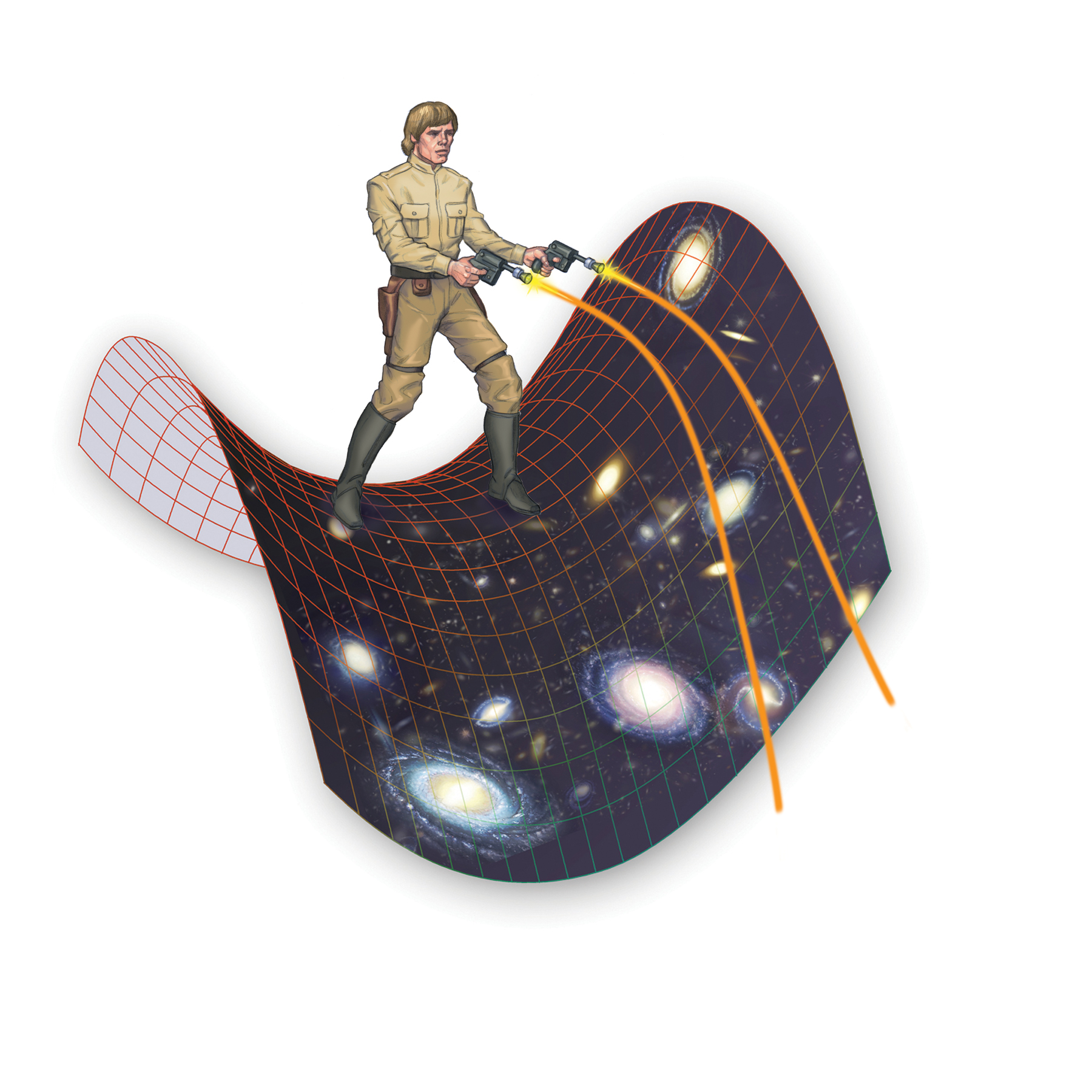Is the Universe Closed?
Can our universe come from nothing? At least one prominent physicist, Lawrence Krauss, answers with a resounding “yes.” In fact, he wrote a book titled A Universe from Nothing to articulate his position, which emanates from his worldview that no creator is involved. Krauss wants science to define nothing (instead of agreeing with the definitions of philosophy and theology). One key component of Krauss’s “nothing” hinges on the sum energy budget for the universe being zero and that requires a universe with a flat geometry. It is difficult to picture this geometry because we can’t “see” the universe’s shape, but recent evidence may undermine that key feature and worldview.
A Little Background
For the last two decades, the prevailing cosmological model for the origin of the universe has posited an inflationary big bang picture. After an incredibly brief epoch of hyperfast expansion, known as inflation, the universe continually expands from an initial hot, dense state. As it expands, it cools and forms all the structure we see—stars, planets, galaxies, and clusters of galaxies, etc. Measurements indicate that the energy of the universe is distributed such that normal matter (electrons, protons, neutrons and the like) comprises about 5%, dark matter adds another 25%, and dark energy makes up the balance. When originally proposed, inflation provided a nice answer to a nagging question: Why did our universe have a geometry so close to flat?
The very process of inflation contained the answer. The exponential growth increased the universe’s size by at least a factor of 1026! This incredible expansion would take the original geometry of the universe (whether closed, flat, or open) and drive it exquisitely close to a flat geometry. This was a hallmark prediction of inflation. Regardless of the universe’s original geometry, inflation’s incredible expansion would result in a measurably flat geometry (at least with our current sensitivity).
Why Is a Flat Geometry Important?
On a basic level, the universe could assume three different geometries: closed, flat, or open—and it has nothing to do with the number of dimensions. The three diagrams below show how parallel lines behave within the different geometries.



In a closed geometry (left), parallel lines converge and eventually cross. In an open geometry (right) the lines grow farther and farther apart. In a flat geometry (center) the lines always stay the same distance apart. Although scientists cannot step outside the universe to see its geometry, they can measure various quantities like the “clumpiness” of the cosmic microwave background radiation (CMB), which is leftover radiation from an early stage of the universe. That distribution pattern can help reveal the geometry.
Given the nature of our universe (as described above), scientists have derived an interesting feature. If the universe is flat, calculations show that the total energy of the universe is zero!1
Krauss relies on this feature of the universe because he argues that the universe arises from a quantum fluctuation. Only if the universe has zero energy can this quantum fluctuation exist for anything more than the briefest length of time. Consequently, evidence that the universe has an open or closed geometry would undermine Krauss’s entire argument.
Is the Universe Actually Closed?
A recent article published in Nature Astronomy indicates that the universe may actually have a closed geometry.2 Analysis of the Planck Legacy data suggests that the universe exhibits more gravitational lensing than expected. In gravitational lensing, gravity bends the path of light traveling through the expanding universe. Thus, a closed geometry for the universe is the simplest way to account for this variation. Furthermore, analysis of Planck satellite data tends to affirm a closed geometry. However, it’s not a closed case. When integrating the Planck analysis with baryon acoustic oscillations surveys of dark energy and gravitational shear studies, the best fits still point to a flat geometry. (On an interesting note, there are other discrepancies like this, such as the disparate measurements of the Hubble constant using the CMB and Type Ia supernovae.) Unfortunately, current technology and measurements cannot resolve whether the universe is actually closed or if scientists need more analysis.
We must wait for future space missions to provide more definitive data but we can think about the potential implications. The discovery of a closed universe would rule out the possibility of a zero-energy universe. The remaining options fit more comfortably within a theistic framework where the universe begins to exist. These results show that scientific advances can provide evidence to evaluate models for the origin of the universe and the worldviews that give rise to those models.
Check out more from Reasons to Believe @Reasons.org
Endnotes
- Marcelo Samula Berman, “On the Zero-Energy Universe,” International Journal of Theoretical Physics 48 (August 25, 2009): 3278–86, doi:10.1007/s10773-009-0125-8.
- Eleonora Di Valentino, Alessandro Melchiorri, and Joseph Silk, “Planck Evidence for a Closed Universe and a Possible Crisis in Cosmology,” Nature Astronomy 4 (November 4, 2019): 196–203, doi:10.1038/s41550-019-0906-9.





